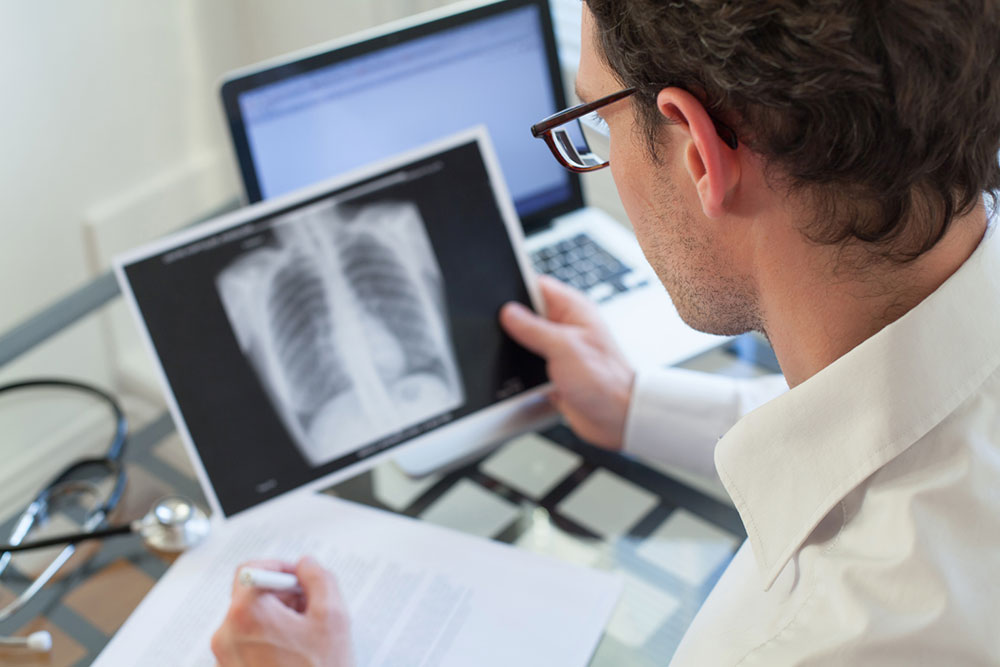Understanding Pneumonia: Symptoms, Causes, Risk Factors, and Diagnosis
This article discusses pneumonia's symptoms, causes, risk factors, and diagnosis methods. Early recognition and treatment are vital for recovery. Understanding the different types of pneumonia and the high-risk groups can help in timely intervention, reducing complications. Proper diagnosis involves physical exams and imaging tests, while treatment includes antibiotics, rest, and hydration. Awareness of these factors can aid in effective disease management and prevention strategies, especially for vulnerable populations like the elderly and those with underlying health issues.

Understanding Pneumonia: Symptoms, Causes, Risk Factors, and Diagnosis
Pneumonia requires prompt medical attention regardless of its severity. Healthcare professionals can recommend appropriate tests to confirm the diagnosis. Following the prescribed post-treatment precautions is crucial for recovery.
Recognizing Symptoms of Pneumonia
Symptoms vary from mild to intense, influenced by the pneumonia type, patient's age, and overall health. Typical signs include:
Cough
Persistent coughing often produces greenish or yellow mucus, sometimes with blood traces.
Fever
Elevated body temperature ranges from mild to high fever.
Chills and Shaking
Shivering episodes are common with pneumonia.
Breathing Difficulties
Shortness of breath may occur during activities like climbing stairs.
Chest Pain
Deep breaths or coughing can trigger sharp chest discomfort.
Headaches
Mild to severe headaches are frequently reported.
Profuse Sweating
Excessive sweating and moist skin are typical signs.
Loss of Appetite
Reduced desire to eat, fatigue, and low energy are common.
Confusion
Older adults may experience mental fog alongside other symptoms.
Types of Pneumonia
Bacterial Pneumonia
Can cause high fevers up to 105°F, significant sweating, rapid breathing, and blue lips or nails due to oxygen deficiency. Confusion or delirium may also occur.
Viral Pneumonia
Has symptoms similar to flu, including fever, headache, dry cough, and muscle aches. Breathlessness lasts 12-36 hours, with worsening mucus production and potential blue lips.
Underlying Causes
Infections by bacteria, viruses, fungi, or exposure to toxic inhalants can lead to pneumonia. Viral infections might evolve into bacterial pneumonia, making accurate diagnosis vital for effective treatment.
At-Risk Populations
Smoking
Smoking damages lungs, raising infection risks.
Recent Respiratory Infections
Past colds, flu, or laryngitis increase susceptibility.
Swallowing Difficulties
Conditions like stroke or neurological disorders cause aspiration risks.
Chronic Lung Conditions
Diseases such as bronchiectasis or cystic fibrosis predispose individuals.
Cerebral Palsy
Higher vulnerability among affected individuals.
Severe Illnesses
Heart disease, diabetes, or liver cirrhosis elevate risk.
Healthcare Settings
Nursing homes pose increased exposure to infections.
Neurological Impairments
Conditions impairing consciousness raise pneumonia chances.
Recent Surgery or Trauma
Recovery periods can heighten risk.
Immunity Deficiency
Weak immune systems from illness or medication can lead to infections.
Diagnosis Methods
Physical Examination
Detecting crackles or rumbling sounds during inhalation suggests pneumonia.
Chest X-ray
Confirms the presence of lung infection.
Additional Tests
Blood work, arterial blood gases, sputum analysis, chest CT, pleural fluid culture, pulse oximetry, and bronchoscopy help in diagnosing and determining the infection type.
Treatment Approach
Managing pneumonia involves hydration, rest, and medical supervision. Persistent cough or fever warrants medical consultation. Over-the-counter medications like acetaminophen can reduce fever. Adherence to antibiotic schedules is critical for recovery.
Note:
Our blog offers diverse, practical health insights. While our information is research-based, it should not replace professional medical advice. We are not responsible for discrepancies or inaccuracies across other sources. Additionally, some offers or schemes might not be included here but could be more beneficial elsewhere.










